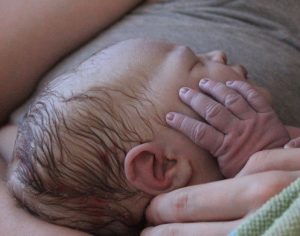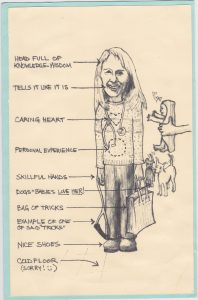
Why midwifery care…..
I’m writing during my new favorite part of the day – in the morning, fresh from a decent night’s sleep, with a warm full sleepy baby snuggled next to me. Magic! And I love knowing that this warm quiet room is the world she arrived into and that she’s known this kind of peace and calm from her very first moments. My husband and I still talk about our daughter’s birth all the time. There are a lot of emotions attached to it – pride, awe, exhilaration, humor – and all those feelings are intense and so positive. The day our daughter was born was a day we were completely, no-holds-barred alive and immersed in the world. That kind of truly authentic experience is pretty rare, and we know that our midwife made it happen. All the time she spent teaching us and building a relationship with us, and just the calm she projects, meant we went into it feeling so peaceful and confident and able to just give ourselves over to the experience.
I decided back in August that I wanted to birth at home because I wanted more control over things. Pregnancy had been feeling kind of like a factory conveyor belt from one procedure to the next. Working with our midwife, I realize I didn’t really get control –

Caricature of me drawn by John Neil Thompson
it was more like nature took control with us in different ways, nudging things along in the right direction. Which is exactly right!
The other thing we’ve been thinking about a lot is community. My grandfather died last year, and so I was spending a lot of time in hospital rooms with him then. It’s weird how hospitals are not really very human spaces. They’re much more about machines. And I know the machines can be incredibly valuable, but what comes across is this feeling that they, with their precision and abstraction, are more to be trusted than human connections and human perceptions. I took a history of science class in college and we learned about this concept – it’s a German word that sounds like “fingerspitzengefiel”, and means literally, “fingertip feeling.” We used it in this class to talk about the practice, (now not so common in the medical profession) of diagnosis by palpation, by touch. Experienced fingers can be incredibly sensitive diagnostic instruments – and then the examiner draws on her own experience and her accumulated knowledge of the community to make meaning of what is felt. And at the same time, there’s a connection being made through touch, communicating trust and compassion. I guess I think that kind of touch is an act of almost ultimate humanity – a connection between individuals that’s also a connection to the accumulated wisdom of the human community – which feels so right for these passages into and out of the world.
I really wish my grandfather could have left the world that way. I’m so glad that’s how my daughter entered it.
Lis Thompson, 2011
